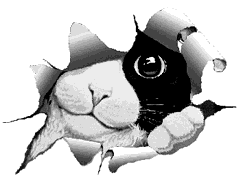
RAGDOLL
ORIGIN
Ragdolls were developed in the 1960’s by Ann Baker, a breeder in California. She bred Josephine, a loving, gentle, longhaired white female carrying Siamese markings, to other longhaired cats carrying Siamese markings. Her original stock consisted of sturdy, free-roaming cats. By selecting individuals with the look she wanted for her breeding program, she created the type standard for the Ragdoll.
ASPECT
Ragdolls are large, loving, laid-back longhairs with beautiful, big blue eyes. The body is light-colored, with darker Siamese-type points on the face, legs, tail and ears. In most patterns, the points are partly covered with white markings. The ideal Ragdoll is a well balanced cat, with no extreme features. Altered males may reach 20 pounds or more; females are proportionately smaller. Ragdolls are slow-maturing, reaching full coat color at two years, and full size and weight at four. There are four patterns: bi-color, van, mitted and pointed. Patterns come in eight colors: seal, blue, chocolate, lilac, red, cream, fawn and cinnamon. Points may be solid, lynx, or tortie. Pointed Ragdolls have the classic, Siamese-type markings. Mitteds look like they went wading in whipped cream and sneaked a sip: their chins are soft, fluffy white, and so are their mittens and boots. Bi- colors look like they went swimming in whipped cream and dunked their faces in for a deep drink Vans look like they nearly drowned in whipped cream. Only the top of the mask, ears, and tail, and perhaps a few spots on the body, show darker markings. CFA accepts bi-colors and vans for showing; mitteds and pointeds are registered.
CHARACTER
Ragdolls adore their humans. They run to greet you at the door, follow you from room to room, flop on you, sleep with you, and love you. They are gentle, carefully avoid scratching people, and are good with children, the elderly, and dogs. Ragdolls tend to be floor cats, not jumpers. They feel that humans prefer purrs to yowls, and keep their voices softly musical.
CARE
Proper maintenance requires a daily run-through with a metal comb to eliminate the potential drawbacks of tangles and hairballs. An occasional bath, attempted only after a complete comb-through and clipping of the nail tips, will keep the coat clean, healthy and beautiful.

Noona is a seal bicolour Ragdoll crossed with a lilac tabby Birman
They are trying to create a new breed, the Ragman, and Noona is their prototype.
